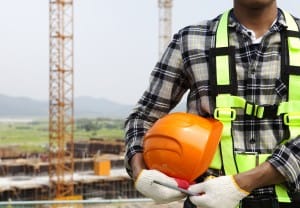Keeping people injury free at work and at the job site is always the top priority. With that said, Total Recordable Injury Rate, commonly known as TRIR, is an indicator that can help your company assess your safety performance and how other companies assess you. TRIR is determined using the following calculation:
Total OSHA recordable injuries x 200,000 / total hours worked = TRIR With this in mind, here are a few tips on how to improve your TRIR with a Safety Performance Plan.
Safety Performance
Some suggest that awareness alone is sufficient for a safe workplace. But it’s important to make the distinction between awareness and performance. Awareness is needed to identify hazards; however, a person must perform the following safety procedures: report or correct the unsafe condition to keep people safe and reach the ultimate safety performance goal of zero work related injuries.
Risk Tolerance
Hazard recognition and awareness do not equal risk tolerance. One may be aware and recognize a hazard but disregard the risk. Risk tolerance can be simply defined as unsafe work behaviors, or how much risk a worker will take before an incident is certain. Workers should have high hazard recognition and a low risk tolerance to ensure they are working safely. It’s a good practice to have workers consider the worst possible outcome before performing a task.
Training
Safety training should be an ongoing part of your Safety Performance Plan to ensure workers are “competent” as defined by OSHA. OSHA defines a “competent person” as: By way of training and/or experience, one who is capable of identifying existing and predictable hazards in their surroundings or working conditions that are unsanitary, hazardous or dangerous to employees and has authorization to take prompt corrective measures to eliminate them.
New workers should be trained and observed on safety protocols and expectations before entering any job site and doing work. Experienced workers should receive regular refresher training. Subject matter and frequency is the key to success with training.
Communication
Effective safety communication and management must be ongoing with safety being equally important as all other aspects of one’s job. Workers should be encouraged to communicate safety concerns with their supervisors. Conduct regular safety meetings to discuss and correct safety concerns and hazards. Ensure effective communication between workers by 2-way radio, the buddy system, signals, signs, barricades or other means.
Documentation
Make sure you have all training documentation, certifications, licenses and any other paperwork in place and available before the job starts to ensure all workers are properly trained and competent in performing their job task.
As prospective clients consider your business for new lucrative projects, TRIR is often a deciding factor in awarding the business. By following these simple procedures, you can reduce your TRIR over time, or better yet, keep it low from the start. Either way, the result is safe workers and the ability to win more projects.

